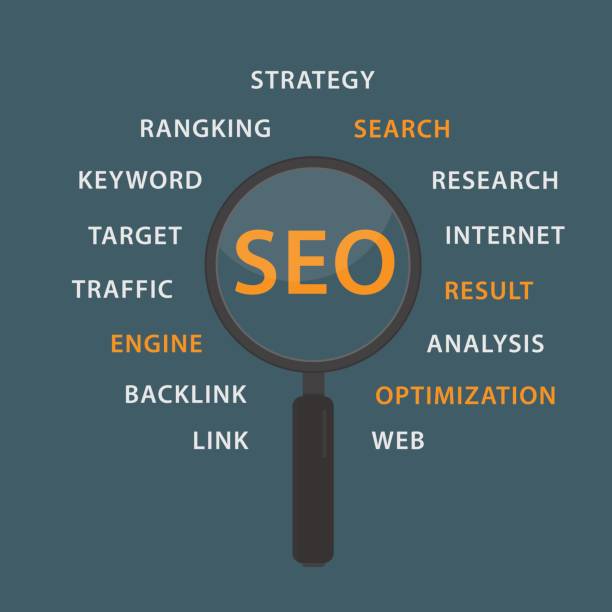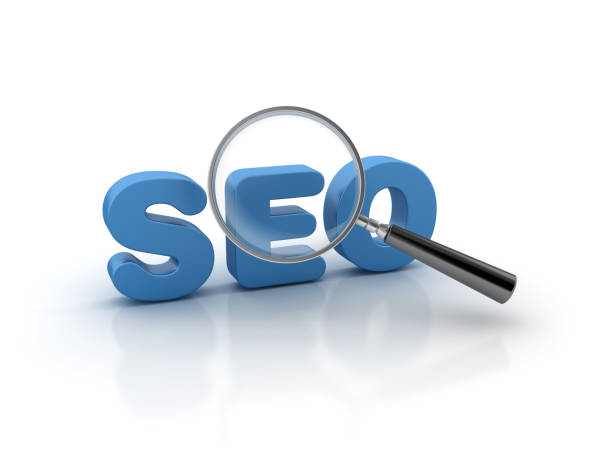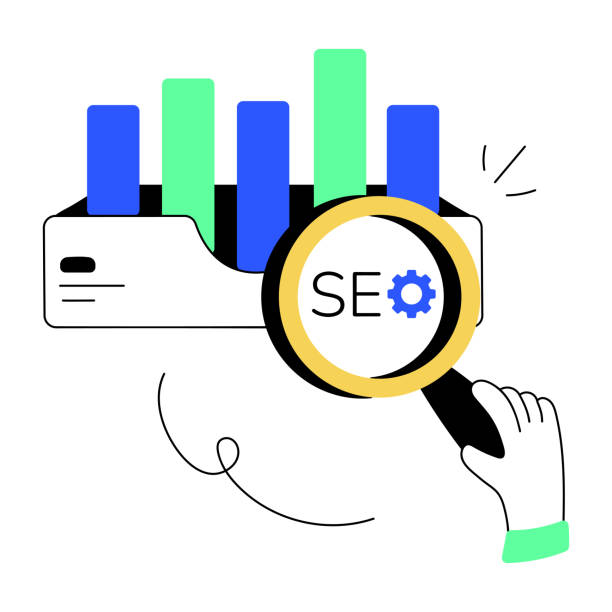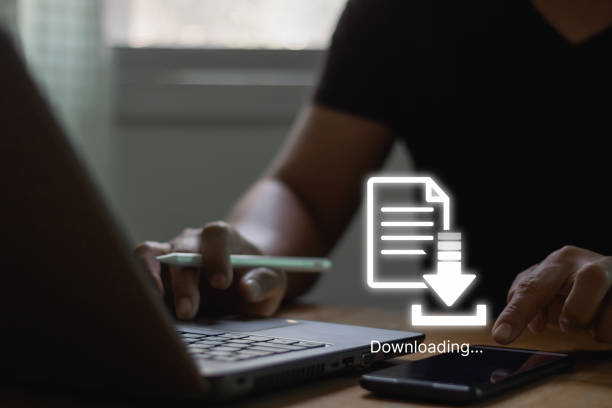What is On-Page SEO and why is it important?

What is On-Page SEO and why is it important?
On-Page SEO (#OnPageSEO) is a set of actions performed to optimize web pages to improve their ranking in search engine results.
On-Page SEO focuses on various aspects of a website, including content, structure, and HTML code.
The importance of On-Page SEO lies in helping search engines better understand the site’s content and display it to relevant users.
A strong On-Page SEO strategy can lead to increased organic traffic, improved user experience, and higher conversion rates.
In fact, On-Page SEO forms the foundation of a successful SEO strategy.
By improving #OnPageSEO, you show search engines that your site is a valuable resource for users.
In the highly competitive online world, On-Page SEO is a necessity.
Without proper optimization, your site will get lost among a multitude of websites.
By using On-Page SEO techniques, you can bring your site to the top of search results and attract user attention.
Optimizing On-Page SEO means investing in your business’s visibility and long-term success.
Don’t forget that #OnPageSEO is not a one-time task; rather, it’s an ongoing process that requires continuous review and updates.
One of the main advantages of On-Page SEO is greater control over factors influencing site ranking.
Unlike Off-Page SEO (#OffPageSEO), which relies on external factors like link building, On-Page SEO allows you to directly control your site’s content, structure, and code.
This enables you to implement necessary changes quickly and effectively and observe the results directly.
Improving On-Page SEO means providing a better user experience, which ultimately leads to increased customer satisfaction and loyalty.
On-Page SEO is a smart investment for any business aiming to succeed in the online world.
Do you dream of a thriving online store but don’t know where to start?
RasaWeb is your comprehensive e-commerce website design solution.
✅ Attractive and user-friendly design
✅ Increased sales and revenue⚡ Get free consultation
Keyword Research: Finding the Best Phrases for SEO

Keyword Research: Finding the Best Phrases for SEO
Keyword research is a fundamental step in any SEO strategy, especially On-Page SEO.
This process involves identifying the words and phrases that users employ to search for information related to your business on search engines.
By understanding these keywords, you can optimize your site’s content to achieve a higher ranking in search results.
Keyword research helps you better understand your audience’s needs and desires, enabling you to produce content that specifically addresses these needs.
Various tools are available for keyword research, including Google Keyword Planner, Ahrefs, SEMrush, and Moz Keyword Explorer.
These tools provide you with information regarding search volume, competition, and related keywords.
Search volume indicates how many times a keyword has been searched within a specific period.
Competition shows how difficult it is to achieve a high ranking for a particular keyword in search results.
By using this information, you can select appropriate keywords to target.
Ahrefs is a very powerful tool in this regard.
When conducting keyword research, it’s important to also look for long-tail keywords.
Long-tail keywords are longer, more specific phrases that have lower search volume but typically also have less competition and higher conversion rates.
For example, instead of targeting the keyword “sports shoes”, you could target the long-tail keyword “buy men’s running shoes in Tehran”.
This keyword is more specific and more likely to attract users who intend to make a purchase.
By using keyword research, you can optimize your #OnPageSEO strategy and attract targeted traffic to your site.
Optimizing #OnPageSEO with appropriate keywords can significantly improve your site’s ranking in search results.
Optimizing Title Tag and Meta Description

Optimizing Title Tag and Meta Description
The Title Tag and Meta Description are two crucial elements in On-Page SEO that play a significant role in attracting users from the Search Engine Results Page (SERP).
The title tag is the text displayed in the browser’s title bar and also on the search results page as the main link to your page.
The meta description is a brief summary of the page’s content, displayed below the title on the search results page.
Optimizing these two elements can significantly increase your site’s Click-Through Rate (CTR).
The title tag should be engaging, relevant, and contain the page’s primary keyword.
The optimal length for a title tag is between 50 and 60 characters to ensure it is fully displayed in search results.
Avoid using generic and vague titles.
Instead, try to write a title that accurately describes the page’s content and encourages the user to click.
The meta description should also be engaging and include a Call to Action.
The optimal length for a meta description is between 150 and 160 characters.
Avoid keyword stuffing in the meta description.
Instead, try to write a brief and compelling summary of the page’s content that encourages the user to click.
By optimizing the title tag and meta description, you can increase your site’s click-through rate and attract more traffic to your site.
Optimizing #OnPageSEO using these two elements is crucial.
Here is an example HTML table comparing title tag and meta description elements:
| Feature | Title Tag | Meta Description |
|---|---|---|
| Display Location | Browser title bar and search results page | Search results page (below title) |
| Goal | Attracting users and informing about page content | Summary of page content and encouraging clicks |
| Optimal Length | 50-60 characters | 150-160 characters |
| Content | Contains main keyword and accurate content description | Engaging summary and call to action |
Content Optimization: Producing High-Quality and Engaging Content

Content Optimization: Producing High-Quality and Engaging Content
Content is King! This phrase is widely heard in the SEO world and holds true.
High-quality and engaging content is the heart of every successful website.
Search engines seek websites that provide valuable content to users.
Therefore, producing high-quality and engaging content is crucial for On-Page SEO.
Your content should provide accurate, comprehensive, and relevant information that meets user needs.
Avoid writing duplicate and copied content.
Your content must be unique and original.
To produce high-quality and engaging content, you must pay attention to your audience’s needs.
Before you start writing, conduct research to understand what information your audience is looking for.
Use keywords relevant to your topic in your content, but avoid overusing them.
Your content should be readable and understandable.
Use short and simple sentences.
Use short and organized paragraphs.
Use images and videos to make your content more appealing.
#OnPageSEO with high-quality and engaging content production is a long-term investment.
One important aspect of content optimization is using an appropriate structure.
Your content should have main headings (H1) and subheadings (H2, H3, etc.).
Headings help users and search engines better understand the structure of your content.
The main heading (H1) should contain the page’s primary keyword and accurately describe the page’s topic.
Subheadings should describe sub-topics of the page and help organize the content.
Optimizing #OnPageSEO with proper content structure helps search engines better index your content and helps users easily find the information they need.
Don’t forget that your content should be regularly updated to remain fresh and relevant.
Disappointed with your e-commerce site’s low conversion rate? RasaWeb transforms your online store into a powerful tool for attracting and converting customers!
✅ Significant increase in visitor-to-buyer conversion rate
✅ Unparalleled user experience to boost customer satisfaction and loyalty⚡ Get free consultation from RasaWeb!
Image Optimization: Reducing Size and Using Alt Text

Image Optimization: Reducing Size and Using Alt Text
Images play a significant role in website appeal and user experience, but if not optimized correctly, they can reduce site load speed and negatively impact On-Page SEO.
Image optimization involves reducing image file size without losing quality and using appropriate Alt Text.
Reducing image size leads to faster web page loading, which is crucial for user experience and SEO.
Google and other search engines give better rankings to websites that load faster.
Various tools are available for reducing image file size, including TinyPNG, ImageOptim, and Compressor.io.
These tools help you minimize image file size without compromising quality.
When saving images, use appropriate formats.
JPEG format is suitable for images with many colors, while PNG format is ideal for images with simple graphics and text.
Alt Text is a text added to an image that is displayed in its place if the image fails to load.
Alt Text also helps search engines understand the image content.
The Alt Text should be descriptive, relevant, and contain the page’s main keyword.
Image optimization is an important aspect of #OnPageSEO that should not be overlooked.
Using appropriate Alt Text not only helps search engines understand images but also assists users who rely on screen readers to comprehend image content.
This improves your website’s accessibility.
Try to write Alt Text concisely and accurately.
Avoid using long and irrelevant Alt Text.
By optimizing images, you can improve your site’s load speed, increase your site’s ranking in search results, and enhance the user experience.
Optimizing #OnPageSEO with optimized images is a win-win for both you and your users.
URL Structure: Creating Short, Descriptive, and SEO-friendly URLs

URL Structure: Creating Short, Descriptive, and SEO-friendly URLs
URL structure is an important aspect of On-Page SEO that is often overlooked.
Short, descriptive, and SEO-friendly URLs (Uniform Resource Locators) help search engines and users better understand the page’s content.
A good URL should include the page’s primary keyword and accurately describe the page’s topic.
Avoid using long, complex, and character-filled URLs.
Long and complex URLs are difficult for users to remember and share.
The best practice is to keep your URLs short, simple, and containing keywords relevant to the page’s content.
For example, if your page is about “On-Page SEO tutorial”, a good URL could be: `example.com/on-page-seo-tutorial`.
Avoid using unnecessary numbers, letters, and special characters in your URL.
Your URLs should be readable and understandable.
Use hyphens (-) to separate words in the URL.
Hyphens help search engines better distinguish words.
By creating short, descriptive, and SEO-friendly URLs, you can help search engines better index your page’s content and help users easily find your page.
Optimizing #OnPageSEO with appropriate URLs is a crucial step in improving your site’s ranking.
In addition to being short and descriptive, URLs should be consistent and permanent.
Changing URLs after pages have been indexed by search engines can lead to a loss of ranking and traffic.
If you must change a page’s URL, be sure to use a 301 redirect to guide users and search engines to the new URL.
A 301 redirect informs search engines that the page has permanently moved to a new URL, and the page’s ranking will be transferred to the new URL.
By using 301 redirects, you can prevent your site from losing ranking and traffic.
Optimizing #OnPageSEO with proper URL management helps maintain your site’s ranking and traffic.
Internal Linking: Creating a Strong Network of Links on the Site

Internal Linking: Creating a Strong Network of Links on the Site
Internal linking is an important technique in On-Page SEO that involves creating links between different pages of your website.
Internal linking helps search engines better understand your site’s structure and helps users navigate your site easily.
A good internal linking strategy can help improve your pages’ ranking in search results and increase your site’s traffic.
Internal linking shows search engines which pages on your site are more important.
By linking to more important pages from other pages, you can tell search engines that these pages have greater value.
When internal linking, use relevant and descriptive Anchor Text.
Anchor text is the text that is linked to another page.
The anchor text should accurately describe the content of the destination page.
Avoid using generic anchor text like “click here”.
Instead, use anchor text that contains keywords relevant to the destination page.
For example, if you are linking to an “On-Page SEO tutorial” page, a good anchor text could be “On-Page SEO tutorial”.
Internal linking should be natural and logical.
Avoid linking to irrelevant and unrelated pages.
Links should be naturally placed within your content and help users gain more information.
Optimizing #OnPageSEO with internal linking is an effective way to improve your site’s ranking.
Here is an example HTML table for internal linking best practices:
| Best Practice | Description |
|---|---|
| Use relevant anchor text | Anchor text should accurately describe the content of the destination page. |
| Link to important pages | Link to pages you want to rank higher. |
| Link to relevant pages | Links should be natural and logical. |
| Avoid excessive linking | The number of links should be balanced and not harm user experience. |
| Check for broken links | Regularly check and repair broken links. |
By following these tips, you can create a strong internal linking strategy that helps improve your site’s SEO.
Internal linking should be done continuously to keep your site always optimized.
Site Speed: Optimizing Web Page Load Speed

Site Speed: Optimizing Web Page Load Speed
Site speed is one of the important factors in On-Page SEO and user experience.
Users expect web pages to load quickly.
If a web page takes too long to load, users may abandon the site and look for their information elsewhere.
Google and other search engines give better rankings to websites that load faster.
Site speed depends on various factors, including image file size, HTML code quality, and server speed.
To optimize site speed, you can take various measures.
Firstly, reduce the file size of your images.
Use optimized images with appropriate formats.
Secondly, optimize your HTML code.
Use clean and organized code, and avoid unnecessary code.
Thirdly, use a fast and reliable server.
A fast server can significantly improve your page load speed.
Various tools are available for testing site speed, including Google PageSpeed Insights, GTmetrix, and WebPageTest.
These tools provide you with information about your site’s speed and offer suggestions for improvement.
Optimizing #OnPageSEO by improving site speed is an essential step in improving your site’s ranking.
In addition to the aforementioned points, using a Content Delivery Network (CDN) can also help improve your site’s speed.
A CDN is a network of servers located in various parts of the world.
When a user visits your site, the site’s content is delivered from the CDN server closest to the user.
This reduces page load time.
Optimizing #OnPageSEO by using a CDN helps provide a better user experience for your users.
Don’t forget that site speed is an important factor in On-Page SEO and should be regularly monitored and optimized.
Is your e-commerce site ready to attract maximum customers and boost sales? RasaWeb revolutionizes your online business with modern and efficient e-commerce website designs.
✅ Increased speed and improved SEO
✅ Excellent user experience on mobile and desktop⚡ Get a free e-commerce website design consultation from RasaWeb!
Responsive Design: Optimizing the Site for Mobile

Responsive Design: Optimizing the Site for Mobile
In today’s world, most users access the internet via mobile devices.
Therefore, optimizing your site for mobile is a necessity.
Responsive Design is a web design technique that allows your site to automatically adapt to the screen size of various devices, including smartphones and tablets.
A responsive site provides a better user experience for mobile users and helps improve your site’s ranking in search results.
Google and other search engines give better rankings to websites optimized for mobile.
To create a responsive site, you can use CSS frameworks like Bootstrap and Foundation.
These frameworks provide a set of tools and templates that help you quickly and easily create a responsive site.
When designing a site for mobile, pay attention to the size of buttons and links.
Buttons and links should be large enough for users to easily tap them with their fingers.
Avoid using small and unreadable fonts.
Your fonts should be large enough for users to easily read the text on a mobile screen.
Optimizing #OnPageSEO with responsive design is an essential investment in the mobile world.
In addition to responsive design, mobile page load speed is also crucial.
Mobile users typically have slower internet connections compared to desktop users.
Therefore, optimizing mobile page load speed for providing a good user experience is very important.
Use optimized images with low file size and use clean and organized code.
By optimizing your site for mobile, you can provide an excellent user experience for mobile users and improve your site’s ranking in search results.
Optimizing #OnPageSEO with a focus on mobile is a smart strategy to attract more audiences.
Schema Markup: Helping Search Engines Better Understand Content

Schema Markup: Helping Search Engines Better Understand Content
Schema Markup is a code that allows you to provide more information about your page’s content to search engines.
By using Schema Markup, you can tell search engines whether your page is about a product, an event, an article, a recipe, or any other type of content.
Schema Markup helps search engines better understand your page’s content and display it to relevant users.
Using Schema Markup can help improve your site’s ranking in search results and increase its Click-Through Rate (CTR).
Various types of Schema Markup are available for you to use.
Some of the most common types of Schema Markup include: Product Schema, Event Schema, Article Schema, Recipe Schema, and Local Business Schema.
To use Schema Markup, you need to add the relevant code to your page’s HTML.
You can use various tools to generate Schema Markup code, such as Google Structured Data Markup Helper and Schema.org.
After adding the Schema Markup code to your page, you can use the Google Rich Results Test tool to check its validity.
Optimizing #OnPageSEO with Schema Markup is an effective way to highlight your content in search results.
By using Schema Markup, you can provide information such as product price, event date, article rating, cooking time, and local business contact information to search engines.
This information can be displayed as Rich Snippets in search results, making your page more noticeable to users and increasing its Click-Through Rate (CTR).
Optimizing #OnPageSEO by using Schema Markup helps you surpass competitors and attract more traffic to your site.
Remember that Schema Markup is a powerful tool that can help improve your site’s visibility in search engines.
Frequently Asked Questions
| Row | Question | Answer |
|---|---|---|
| 1 | What is On-Page SEO? | On-Page SEO refers to the set of actions performed within a website (on its pages) to improve its ranking in search engine results. This includes optimizing content, site structure, and HTML codes. |
| 2 | Why is On-Page SEO important? | On-Page SEO helps search engines better understand the page content and determine if that page is relevant and valuable for users’ searches. This better understanding leads to higher rankings. |
| 3 | What is the first and most important step in On-Page SEO? | Keyword Research is the most important initial step. By finding appropriate keywords, targeted content relevant to user needs can be produced. |
| 4 | What is the role of the Title Tag in On-Page SEO? | The title tag is one of the most important ranking factors and should include the main keyword. This tag is displayed as the page title in search results and influences the Click-Through Rate (CTR). |
| 5 | What is the importance of the Meta Description? | The meta description does not directly impact ranking, but by providing an attractive summary of the page content in search results, it can encourage users to click, thereby increasing the Click-Through Rate (CTR). |
| 6 | Why is using headings (H1, H2, etc.) important in content? | Headings help structure content and improve readability for users and search engine crawlers. Using keywords in headings also helps search engines better understand the topic. |
| 7 | What does Image Optimization in On-Page SEO include? | It includes compressing images to reduce size, using descriptive and relevant file names, and filling in the Alt tag (alternative text) with relevant keywords to help search engines understand the image content. |
| 8 | What is Internal Linking in On-Page SEO? | Internal linking refers to creating links between different pages of a website. This helps distribute page authority (Link Equity), improve user experience, and assist search engine crawlers in discovering new pages. |
| 9 | Why is Page Speed important for On-Page SEO? | Page load speed is a direct ranking factor and significantly impacts user experience. Slow pages can lead to an increased bounce rate and decreased user engagement. |
| 10 | What role does quality content play in On-Page SEO? | High-quality, comprehensive, unique, and valuable content for the user, is the core of On-Page SEO. This content not only attracts and retains users but also sends positive signals to search engines, contributing to better rankings. |
And other services of Rasa Web Advertising Agency in the field of advertising
- Smart Direct Marketing: A fast and efficient solution for customer acquisition, focusing on intelligent data analysis.
- Smart Direct Marketing: A combination of creativity and technology to increase website traffic by optimizing key pages.
- Smart Customer Journey Map: Professional optimization to increase website traffic using marketing automation.
- Smart Data Analysis: An innovative platform for improving online growth with attractive UI/UX design.
- Smart UI/UX: A dedicated service for growth and increasing click-through rates based on customized user experience.
And more than hundreds of other services in the fields of internet advertising, advertising consulting, and organizational solutions
Internet Advertising | Advertising Strategy | Advertorials
Resources
Complete Guide to On-Page SEO What is On-Page SEO? Comprehensive On-Page SEO Guide What is On-Page SEO and how important is it?
❓ For your business to thrive in the digital world, RasaWeb Afarin Digital Marketing Agency paves your path to success by offering services such as user-friendly website design, professional SEO, and social media management.
📍 Tehran, Mirdamad Street, next to Bank Markazi, Southern Kazeroon Alley, Ramin Alley, No. 6



